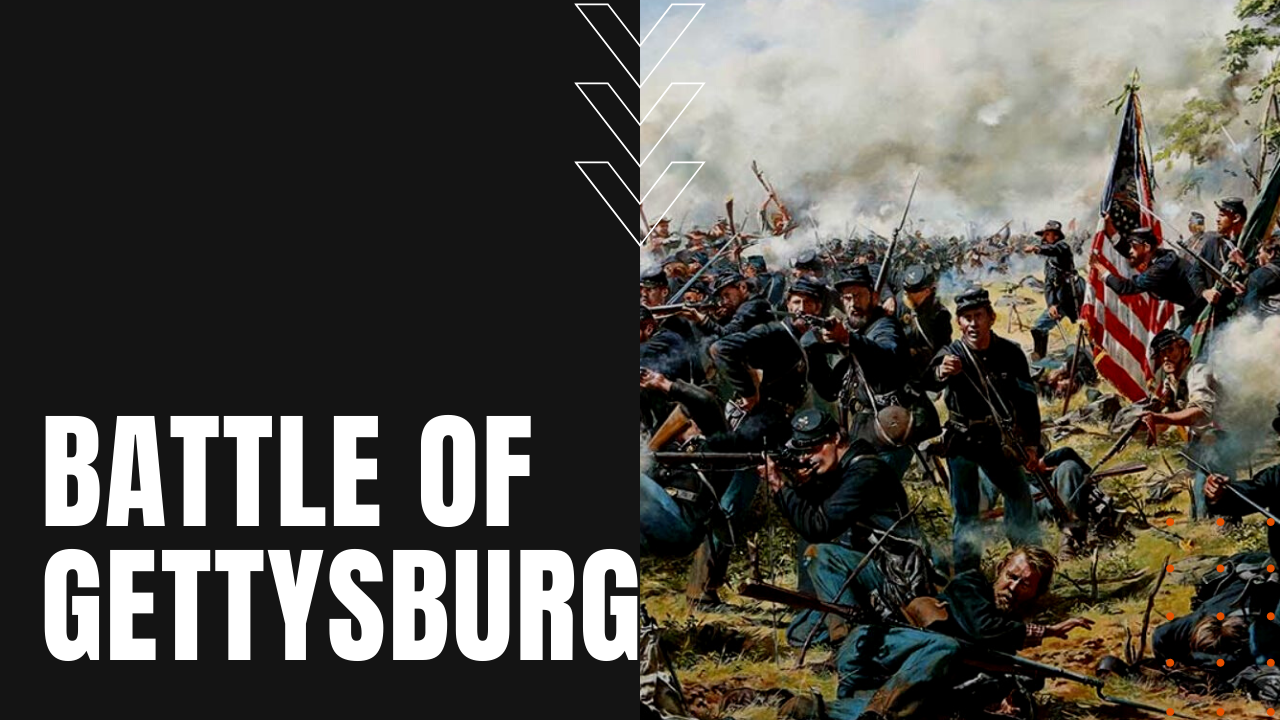Battle of Gettysburg

After the South’s first offensive into the north ended in defeat at Antietam the previous fall, by late June of 1863, Robert E. Lee’s Confederate Army of Northern Virginia yet again set out on a second-round offensive into the north.
In response, Major General George Gordon Meade ordered the immediate pursuit of Lee’s 75,000-man army, prompting three days of bloody combat at the prosperous crossroads town of Gettysburg, Pennsylvania. After Confederate troops were pushed back through town to Cemetery Hill by Union cavalry brigades on July the 1st, Lee gave discretionary orders to counterattack before reinforcements could arrive on the Union side.
Confederate General Richard S. Ewell hesitated due to his assessment of Union strength in the field, allowing Union corps General Winfield Scott Hancock to arrive with reinforcements, setting up a defensive line that ran from Cemetery Ridge to a second hill known as Little Round Top.
When was the Battle of Gettysburg?
Against the advice of his subordinate generals, on July 2nd, Lee ordered a flanking attack on Union positions, setting off a 4 P.M. battle that would lead to approximately 9,000 casualties on either side, bringing the two-day casualty total to some 35,000 men. The Union Army held their ground, which dragged the conflict into a third day of punishing warfare. After sunrise on July the 3rd, Union forces engaged in a seven-hour firefight at Culp’s Hill, pushing back the Confederate threat, until Lee ordered a 15,000-man offensive under the command of General George Pickett.
Known as “Pickett’s Charge,” at around 3 P.M., Pickett tasked his men into marching some three-quarters of a mile across open fields, against dug-in Union positions, leaving his men exposed on all sides to withering artillery and small arms fire, leading to a 50% casualty rate on the Confederate side, while Pickett’s division in particular lost two-thirds of its men.
Why was the Battle of Gettysburg a Turning Point in the Civil War?
Although the overly-cautious Meade met criticism for not pursuing the Confederate army during their humiliating withdrawal, combined with Ulysses S. Grant’s July 4th victory at Vicksburg, the two battles irrevocably turned the momentum of the Civil War firmly in favor of the Union side. By the end of the three-day battle, Union casualties stood at 23,000 men, while the Confederates lost some 28,000, leading to President Abraham Lincoln’s now infamous Gettysburg Address on November 19th, 1863.
